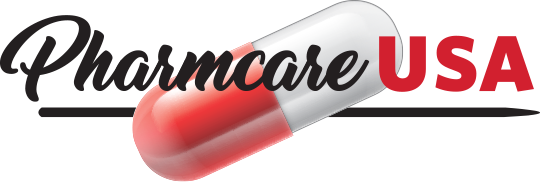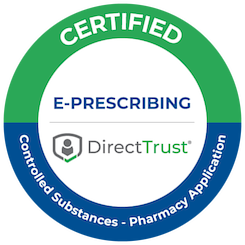Introduction to LTC Pharmacy Services
Long-term care (LTC) facilities provide essential medical care and support for individuals with chronic illnesses, disabilities, or age-related needs. To ensure the best possible outcomes for their residents, these facilities rely heavily on LTC pharmacy services. These specialized pharmacies focus on fulfilling the unique medication requirements of LTC patients, as well as providing comprehensive medication management and consulting services to the healthcare providers and staff within the facilities.
LTC pharmacy services play a crucial role in optimizing patient care, as they must cater to a diverse range of medical conditions and coordinate with multiple healthcare professionals. This can be a complex and time-consuming process, with the need to maintain accurate medication records, ensure timely dispensing of prescriptions, and monitor for any adverse drug interactions or side effects. To address these challenges and improve patient outcomes, LTC pharmacies are increasingly turning to advanced technology solutions, such as pharmacy automation systems.
The adoption of pharmacy automation is revolutionizing the way LTC pharmacies operate, enhancing their efficiency and reducing the risk of medication errors. In this article, we will explore the impact of pharmacy automation on patient care in LTC settings, discussing the benefits it brings and the various tools available. We will also touch on the importance of training and support in the successful implementation of pharmacy automation and how its success can be measured.
The Importance of Efficiency in Long Term Care Pharmacies
Efficiency is of paramount importance in LTC pharmacy services, as it directly affects the quality of care that patients receive. A well-run pharmacy can ensure that patients receive their medications on time, in the correct dosages, and with minimal risk of complications. In addition, efficient pharmacies can help to reduce the administrative burden on healthcare providers and staff, allowing them to focus more on direct patient care.
One key aspect of efficiency in long term care pharmacies is the ability to accurately and quickly process a large volume of prescriptions. With many patients in LTC facilities requiring multiple medications, the number of prescriptions that need to be filled each day can be overwhelming. This is further complicated by the fact that many LTC patients have complex medication regimens, with specific dosing schedules and potential drug interactions that must be carefully monitored.
Another important factor in LTC pharmacy efficiency is the ability to adapt to changing patient needs and healthcare practices. As new medications and treatment protocols are developed, LTC pharmacies must be able to quickly incorporate these into their services. This requires a high degree of flexibility and adaptability, as well as ongoing education and training for pharmacy staff.
How Pharmacy Automation Revolutionizes Long Term Care Patient Care
Pharmacy automation has the potential to transform LTC patient care by streamlining pharmacy operations and reducing the risk of medication errors. By automating various aspects of the medication management process, pharmacies can significantly improve their efficiency and ensure that patients receive the highest quality care.
Pharmacy automation systems can help to expedite the medication dispensing process, making it faster and more accurate. Automated dispensing units can rapidly fill prescriptions, while barcode scanning technology ensures that the correct medication is dispensed every time. This not only saves time for pharmacy staff but also reduces the likelihood of medication errors due to human error or miscommunication.
In addition to improving the dispensing process, pharmacy automation can also enhance medication management and monitoring, particularly for patients with complex medication regimens. Advanced software systems can track patients’ medication histories, identify potential drug interactions or allergies, and provide alerts to healthcare providers and staff when issues arise. This enables more proactive and informed decision-making, ultimately leading to better patient outcomes.
Benefits of Pharmacy Automation in LTC Settings
There are numerous benefits to implementing pharmacy automation in LTC settings, both for the pharmacies themselves and the patients they serve. Some of these benefits include:
- Increased efficiency: Pharmacy automation can significantly speed up the medication dispensing and management process, allowing pharmacies to process more prescriptions in less time. This can help to reduce wait times for patients and ensure that they receive their medications promptly.
- Reduced medication errors: By automating various aspects of the medication process, pharmacy automation can help to minimize the risk of human error and miscommunication, leading to fewer medication errors. This is particularly important in LTC settings, where patients may have complex medication regimens and be at higher risk for adverse drug events.
- Improved medication adherence: Pharmacy automation systems can provide reminders and alerts to healthcare providers and staff when medications are due to be administered, helping to ensure that patients receive their medications on schedule. This can help to improve medication adherence and overall patient outcomes.
- Enhanced patient safety: By reducing the risk of medication errors and improving medication management, pharmacy automation helps to enhance patient safety within LTC facilities. This can lead to fewer adverse drug events and better overall health for patients.
- Cost savings: By streamlining pharmacy operations and reducing the need for manual processes, pharmacy automation can help to lower labor costs and improve overall efficiency. This can result in cost savings for both pharmacies and LTC facilities.
Reducing Medication Errors with Pharmacy Automation Technology
Medication errors are a significant concern in healthcare settings, particularly in LTC facilities where patients may be more vulnerable due to their age, health status, or complex medication regimens. Pharmacy automation technology can play a crucial role in reducing the occurrence of medication errors by improving accuracy and efficiency throughout the medication management process.
One way that pharmacy automation helps to reduce medication errors is through the use of barcode scanning technology. By scanning a medication’s barcode before dispensing, pharmacy staff can ensure that the correct medication is being given to the patient, in the correct dosage and form. This helps to eliminate errors caused by miscommunication or human error, as well as reducing the risk of medication mix-ups.
In addition to barcode scanning, pharmacy automation systems often include advanced software tools for tracking and monitoring medication use. These tools can help to identify potential drug interactions, allergies, or other issues that may pose a risk to patient safety. By providing healthcare providers and staff with real-time information about potential medication issues, pharmacy automation can help to prevent adverse drug events and improve overall patient safety.
Examples of Pharmacy Automation Tools
There are many different types of pharmacy automation tools available, ranging from simple devices for counting and dispensing medications to more sophisticated systems for managing and monitoring medication use. Some examples of pharmacy automation tools include:
- Automated dispensing cabinets (ADCs): These are computerized medication storage and dispensing units that can be used in LTC facilities to streamline the medication management process. ADCs can help to ensure that medications are stored securely and are dispensed accurately, reducing the risk of medication errors.
- Robotic prescription dispensing systems: These systems use robotic technology to quickly and accurately fill prescriptions, eliminating the need for manual counting and dispensing. Robotic dispensing systems can help to improve efficiency in LTC pharmacies and reduce the risk of medication errors.
- Barcode scanning technology: As mentioned earlier, barcode scanning can help to ensure that the correct medication is dispensed to patients, reducing the risk of medication errors. This technology can be integrated into various pharmacy automation systems, from ADCs to robotic dispensing systems.
- Medication management software: Pharmacy automation often includes advanced software tools for tracking and monitoring medication use. This can help to identify potential drug interactions, allergies, or other issues that may pose a risk to patient safety, enabling more proactive and informed decision-makingby healthcare providers and staff.
- Electronic medication administration records (eMAR): eMAR systems can help to improve medication management by providing real-time information about medication administration. These systems can help to ensure that patients receive their medications on schedule, and can alert healthcare providers and staff to any missed doses or potential issues.
How Pharmacy Automation Helps Long-Term Care Facilities
Pharmacy automation technology can provide numerous benefits to LTC facilities, helping to improve patient care and streamline operations. Some of the ways that pharmacy automation can benefit LTC facilities include:
- Reduced medication errors: By automating various aspects of the medication management process, pharmacy automation can help to reduce the risk of medication errors. This is particularly important in LTC facilities, where patients may have complex medication regimens and be at higher risk for adverse drug events.
- Improved efficiency: Pharmacy automation can help to streamline pharmacy operations and reduce the time needed to process prescriptions. This can help to improve efficiency within LTC facilities and reduce the administrative burden on healthcare providers and staff.
- Enhanced patient safety: By reducing the risk of medication errors and improving medication management, pharmacy automation helps to enhance patient safety within LTC facilities. This can lead to fewer adverse drug events and better overall health for patients.
- Better medication adherence: Pharmacy automation systems can provide reminders and alerts to healthcare providers and staff when medications are due to be administered, helping to ensure that patients receive their medications on schedule. This can help to improve medication adherence and overall patient outcomes.
- Cost savings: By streamlining pharmacy operations and reducing the need for manual processes, pharmacy automation can help to lower labor costs and improve overall efficiency. This can result in cost savings for both pharmacies and LTC facilities.
Training and Support for Pharmacy Automation Adoption
To successfully implement pharmacy automation technology, LTC pharmacies and facilities must receive adequate training and support. This includes not only training on how to use the technology but also education on how it can benefit patient care and improve pharmacy operations.
Pharmacy automation vendors should provide comprehensive training programs that cover all aspects of the technology, from installation to operation. They should also offer ongoing support, including troubleshooting and maintenance services, to ensure that the technology continues to function at optimal levels.
In addition to vendor support, it is important for LTC pharmacies and facilities to provide their staff with education and training on the benefits of pharmacy automation technology. This can help to ensure that staff members are fully invested in the adoption of new technology and understand how it can improve patient care.
Measuring the Success of Pharmacy Automation in LTC Patient Care
To determine the success of pharmacy automation in LTC patient care, various metrics can be tracked and analyzed. Some of the metrics that can be used to measure the impact of pharmacy automation technology include:
- Medication error rates: By tracking medication error rates over time, pharmacies and LTC facilities can determine whether pharmacy automation technology has had a positive impact on patient safety.
- Dispensing times: Tracking dispensing times can help to determine whether pharmacy automation has improved efficiency within the pharmacy.
- Patient outcomes: By tracking patient outcomes, such as hospital readmission rates or medication adherence, pharmacies and LTC facilities can measure the impact of pharmacy automation on patient care.
- Cost savings: Tracking cost savings resulting from the implementation of pharmacy automation can help to determine the ROI of the technology.
Conclusion: The Future of Long-Term Care Pharmacy Services
Pharmacy automation technology has the potential to revolutionize long-term care patient care by improving efficiency, reducing medication errors, and enhancing patient safety. As the healthcare industry continues to evolve, it is likely that pharmacy automation will become an increasingly important aspect of LTC pharmacy services.
At Pharmcare USA, we are committed to utilizing technology to help serve our customers and patients more effectively. If you are interested in learning more about how pharmacy automation can help your Long-Term Care Facility thrive, please contact us for a consultation.




